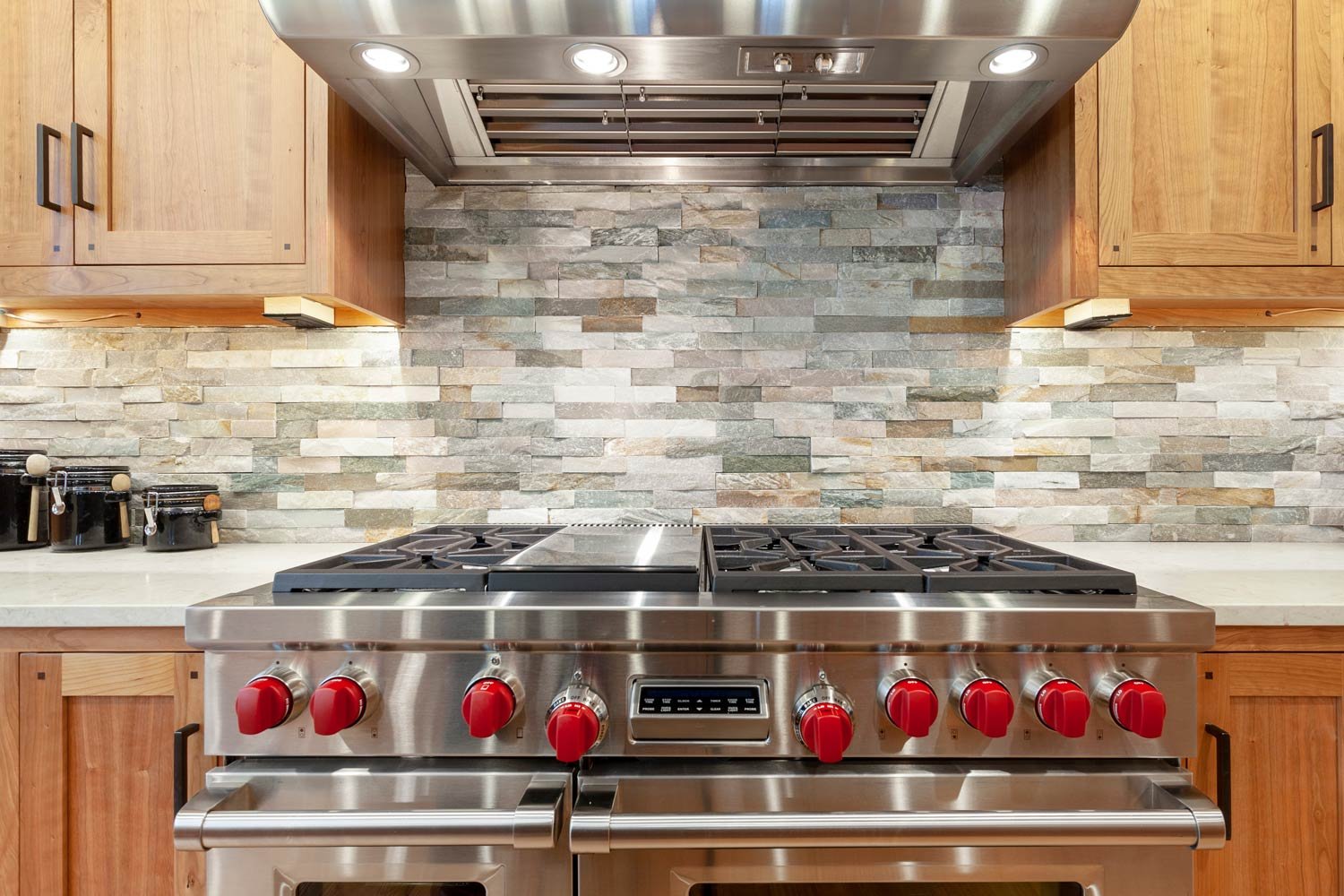Transform Your Kitchen with a Stunning Backsplash
The kitchen backsplash has become one of the most powerful design elements in today’s homes. What started as a simple wall protector has evolved into a statement piece that enhances both beauty and functionality. Whether you’re planning a kitchen remodel in Rochester, updating your backsplash in Livingston County, or giving your home a modern refresh, Bernhardt’s Remodeling Center offers expert design, quality installation, and materials that stand the test of time.
A Look Back: The Evolution of Kitchen Backsplashes
Early backsplashes were made primarily for utility. Homeowners used materials like Masonite, ceramic tile, or laminate to guard walls against spills, grease, and water. But as interior design evolved, so did the role of the backsplash—it became a focal point for creativity, color, and craftsmanship.
Today, modern kitchen backsplashes combine form and function. Homeowners can choose from subway tile, stainless steel, glass mosaics, marble, and even engineered stone. At Bernhardt’s Remodeling Center, our experts help you find the perfect balance between style, durability, and easy maintenance, ensuring your backsplash looks beautiful and performs perfectly for years to come.
Choosing the Right Material for Your Kitchen
Your backsplash should reflect your personality while also withstanding daily wear and tear. When selecting materials, Bernhardt’s Remodeling Center recommends considering the following factors:
Tile Backsplashes: Ceramic and porcelain tiles remain top choices for their durability, versatility, and easy cleaning. They’re ideal for high-traffic kitchens and come in endless patterns and colors—from glossy subway tiles to handcrafted mosaics.
Glass Backsplashes: Glass tiles are non-porous, stain-resistant, and reflect light beautifully, helping smaller kitchens feel more open and bright.
Natural Stone Backsplashes: Materials like granite, marble, and travertine bring warmth and elegance but require regular sealing to protect against moisture and stains.
Metal and Stainless Steel: Perfect for contemporary or industrial kitchen designs, these options are sleek, heat-resistant, and easy to maintain.
Manufactured Stone or Composite Materials: Offer the luxurious look of stone with less maintenance and greater uniformity in color and texture.
Custom Backsplash Design Options
The backsplash can add greatly to the look of your kitchen as well as the value of your home. With the help of Bernhardt’s remodeling experts, your new backsplash will endure years of use with a look that will stand the stains of time.
Your backsplash isn’t just a practical feature—it’s an opportunity to personalize your kitchen. Bernhardt’s Remodeling Center specializes in custom backsplash installation tailored to your home’s unique style.
We offer:
Classic subway tile layouts for timeless appeal
Herringbone and chevron patterns for dynamic movement
Vertical tile designs for modern, minimalist kitchens
Mixed-material mosaics for artistic flair
Even details like grout width and color can make a significant visual difference. Our design experts guide you through every option to ensure your backsplash complements your countertops, cabinets, and flooring seamlessly.
Why a Quality Backsplash Matters
A professionally designed and installed backsplash doesn’t just improve your kitchen’s aesthetics—it adds long-term value to your home. Durable materials protect your walls, make cleaning easier, and resist wear from daily cooking activities.
Homeowners throughout Monroe County, Ontario County, Livingston County, and Steuben County trust Bernhardt’s Remodeling Center for reliable craftsmanship, exceptional materials, and kitchen remodeling services that enhance both beauty and functionality.
Our team ensures every backsplash project meets the highest standards of quality and precision, using materials that perform beautifully in both traditional and contemporary kitchens.
Boost Home Value with a Kitchen Remodel
Adding a new backsplash is one of the most cost-effective ways to refresh your kitchen and increase home value. Combined with upgrades like new countertops, custom cabinetry, or energy-efficient appliances, your kitchen can quickly become the centerpiece of your home.
Whether you’re looking for a modern kitchen backsplash design, a rustic farmhouse look, or a luxury stone backsplash, Bernhardt’s Remodeling Center can bring your vision to life.
Schedule Your Free Kitchen Design Consultation
Ready to reimagine your kitchen with a stunning new backsplash?
Bernhardt’s Remodeling Center proudly serves homeowners across Monroe, Livingston, Steuben, and Ontario Counties, offering comprehensive kitchen remodeling and backsplash installation services.
Contact our experienced design team today to schedule your free consultation. We’ll help you explore backsplash materials, patterns, and finishes that enhance your home’s beauty and reflect your personal style.
Transform your kitchen—one tile at a time—with Bernhardt’s Remodeling Center.

